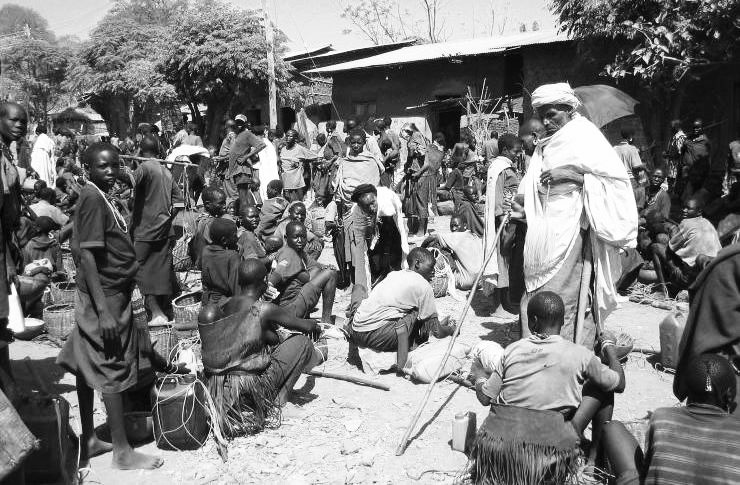
Ethiopia is a culturally rich country. Among these priceless indigenous customs conflict resolution mechanism sticks out. For centuries, traditional conciliation has been playing a pivotal role in guaranteeing peace, stability and harmony. In handling such peace brokering task in a pristine way, village elders and religious leaders have an immense contribution. The willingness of the conflicting families to solve problems amicably is also vital. We could take the case of Gumuz people to showcase how much indigenous conciliation mechanisms could warrant peace and harmony among societies.
The Gumuz people predominantly dwell in the Benishangul-Gumuz State in Ethiopia as well as in Kowara Woreda and Fazogli region in Sudan. The languge they speak falls in the Nilo-Saharan linguistic family, Gumuz and the population size reaches up to 200,000. Over 120,000 of them live in Ethiopia, in an area covered mainly by Savana grass and other trees.
According to the magazine published by the Ministry of Culture and Tourism, the livelihood of the Gumuz people depends mainly on agriculture. They grow millet, sorghum, onion, cotton, tobacco and mango. They as well grow various species of cereals, vegetables and fruits. Porridge is the stable food of the Gumuz people. It is cooked from sorghum and flavored with a sauce seasoned by various aromatic herbs, onions, and spices. Besides cultivation, the Gumuz people also engage in hunting wild animals as well as gathering wild fruits and seeds. Most of the people maintain indigenous religious practices; whereas those who live around the Sudanese border are followers of the Islamic faith.
The Gumuz people have exemplary reconciliation culture. The practice would take place when the families of the victim are willing to reconcile after being persuaded by village elders, religious leaders and another third party. Both of the quarreling parties choose ten elders from their respective tribes who could resolve the dispute peacefully.
Tesfaye Bayeta who made a research on indigenous conciliation culture of the Gumuz people said that the Gumuz conciliation process is one of the fascinating cultural practices of Ethiopia that every nation and nationality should emulate.
As to him, the process starts after launching a committee which is responsible to assigning chairperson, deputy chairperson and other members who are entitled to lead and facilitate the process.
‘‘If a murder crime is committed, three and more women arrive at the place. The victimizer’s family sends grain, green grass and bone to the victim’s family. Then they ask the victim’s family to taste the grass and grain. S/he also touches the bone. Finally, s/he expresses her / his agreement for conciliation,’’ Tesfaye notes.
After that the women returned to the victimizer’s home, they convey the message told to deliver. Then village elders head to the victim’s home. Thus, the mediators order the offender to pay blood money to the victim or to his/her family. Then, they appoint a time and place for conciliation, after passing their verdict to fine the culprit.
If one of them breaches the reconciliation, s/he would pay 10,000 Birr for government and would be sentenced to ten years of imprisonment according to the rule already designed by the mediators. After that, with their family members the two sides will go to the place where the conciliation process would take place. The victimizer families drag along compensations such as heads of cattle or goats.
The traditional reconciliation ceremony is mostly undertaken at a distant place from the village. Most of the time, riversides or beaches are chosen. The important materials and animals needed for the appeasement process includes stone, bullet, knife, thorn, stretcher, chicken and goat. The aforementioned objects and animals are chosen mainly due to their nature. As everybody can notice them and easily check some of them are harmful and others are harmless. Therefore, if one of the quarreled ones has a premeditated desire to breach the oath, s/he could face the fate of objects and animals mentioned above. The ceremony is undertaken putting the two parties behind curtains, so that they could not see anyone.
If the felony involves killing, the perpetrator of the crime and the family of the deceased exchange greetings behind the curtain. After the greetings, the individual confesses her / his crime and begs the family of the victim for forgiveness. Then the victim’s family would confirm its forgiveness for the lawbreaker. Having observed all these processions, the conciliators start poking the chicken’s eye by the thorn so as to threaten the lawbreaker and the family of the victim that they could face the same fate if they break their oath. After the conciliation process is over successfully, they slaughter the goat and feast frying the meat.
Afterwards, the conciliators accompany the offender and the victim’s family to their homes. Eventually, the victim’s family drops any possible plan for vengeance. Moreover, they help each other in various social and economic activities. They become examples to their tribes that crime is sinful and forgiveness on the other way is a righteous act. Having accomplished such astonishing rituals, they save lives and minimize other social burdens of the family who could have been victim of revenge.
Tesfaye underscores that such traditional dispute-resolution mechanisms are highly important for creating peaceful and a harmonized country.
‘‘We have to preserve and promote our indigenous conflict resolutions methods. They could save life, time, money and energy. They help us to avoid vengeance. Rather, we would be open for forgiveness and mercy,’’ he pointed out.
Hence, the government and other stakeholders should give attention for conserving such cultural heritages. Generations should learn their importance. If so, such blessings would play their part in nurturing ethical and responsible citizens who believe in forgiveness.
The Ethiopian Herald August 2/2020
BY TSEGAY HAGOS



